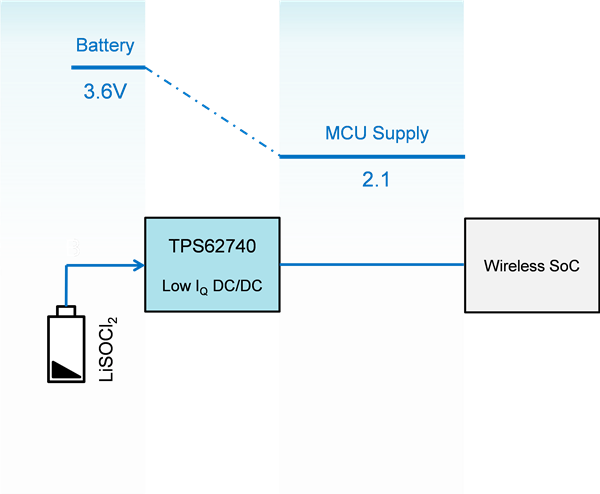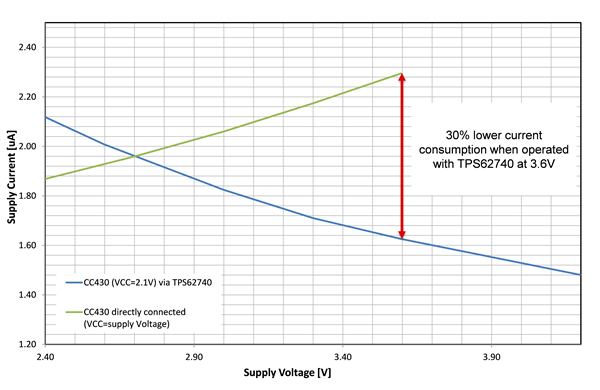SSZTC08 october 2015 CC430F5137 , TPS62740
One of the most technical challenges in the Internet of Things (IoT) is that you can place sensor nodes anywhere. These sensors measure parameters such as temperature and humidity (in a connected home), the mechanical stress of motorway bridges (live maintenance monitoring), or the consumption of gas or water (smart flow metering). Servers gather and process this data and need an extensive coverage area to make a robust network with reliable data. The technology to make this possible is the wireless transmission of the sensor data to a central host system. To enable a broad network like this, you must consider another critical aspect, the whole sensor node must feature a very long operational lifetime. The higher the lifetime, the lower the maintenance cost.
To achieve a wireless sensor lifetime of 10 years or more, having a design with the lowest current consumption is absolutely key. Ultra-low-power microcontroller system-on-chip (SoC) devices feature several low-power modes to decrease current consumption. An ultra-low power SoC like the CC430F5137 extends wireless sensor lifetime because of its implemented standby mode, where the device consumes around 2µA when connected directly to the battery.
You can further reduce current consumption when using SoCs in combination with an ultra-low power buck converter to decrease the supply voltage, as shown in Figure 1. These are step-down converters with a quiescent current of several hundredths of nanoamperes, like the TPS62740 (360nA IQ). The blue trace in Figure 2 shows current drawn by the application after stepping down the supply voltage to 2.1V using this DC/DC converter. The green trace shows the supply current of this device when connected directly to the battery. The current consumption depends on the supply voltage. Both curves show that the higher the battery voltage, the more power you save, due to the efficient step-down conversion. At the typical 3.6V lithium thionyl chloride (LiSOCl2) battery terminal voltage, overall current consumption goes down by 30% compared to the direct battery connection. That translates into a corresponding system lifetime increase.
Until now, sensor data radio-frequency (RF) transmission was not widely implemented for longer distances. This long distance wireless feature adds another level of complexity to the system’s power considerations. While a wireless sensor node needs to consume the lowest possible average power, it must also be able to deliver high peak currents for occasional data transmissions. Therefore, in addition to featuring the lowest possible quiescent current, the DC/DC converter must fulfill two additional key requirements for wireless data transmission of sensor data:
- To provide high-efficient power conversion for the higher current of the RF amplifier.
- To operate with very low noise.
Ultra-low power DC/DC converters like the TPS62740 fill the bill by featuring high efficiency over more than four output-current decades from several microamperes to several hundreds of milliamperes – a key feature to ensure lowest losses when converting voltage for wireless SoC’s in sleep mode as well as highest efficiency for the higher power data transmission. To make sure to get a silent supply for the RF data transmission, the converter exhibits lowest-output voltage ripple as it uses the RF-friendly DCS control.
Additional Resources
- Start designing today with the Energy Buffering for Long-Life Battery Applications Reference Design and the Smart Meter Power Management Solution with Energy Buffering Reference Design
 Figure 1 Low IQ Power
Solution Block Diagram
Figure 1 Low IQ Power
Solution Block Diagram Figure 2 Wireless SoC Current
Consumption in Sleep Mode
Figure 2 Wireless SoC Current
Consumption in Sleep Mode